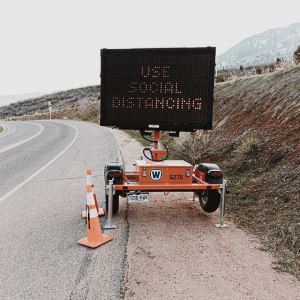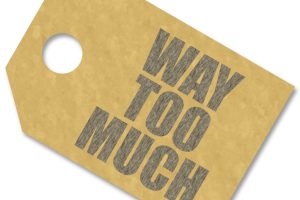
New Zealand moved to COVID-19 Alert Level 3 at 11:59pm on Monday, 27 April. FAQs received from our members about operating businesses under Alert Level 3 below.
Am I able to apply for the COVID-19 Leave Support scheme for my employees?
As of 28 April, the COVID-19 Leave Support scheme covers all workers (outside of the state sector), not just those in essential services.
This means all businesses, organisations, and self-employed people can apply.
The leave support scheme covers workers who are unable to work from home and need to self-isolate (because they, or someone in their bubble, are sick, have come into close contact with someone with COVID-19, or are at higher risk of becoming severely sick if they contract the virus).
The leave payment is $585.80 a week for full-time employees and $350 a week for part-time workers.
The other criteria remain the same, including that businesses must be experiencing hardship due to COVID-19.
Also note that employers cannot apply for leave support and the COVID-19 Wage Subsidy for the same employee at the same time. If an employer is eligible for both schemes, it may be more appropriate to apply for the wage subsidy, as it is of longer duration and more flexible.
Applications for the COVID-19 Leave Support scheme can be made from 1 May on the Work and Income website.
What sort of contact tracing will we have to do when we re-open?
Many businesses are asking this question.
Contact tracing refers to the process by which health officials track down people who have been in contact with someone who gets COVID-19, so they can get tested and self-isolate, too.
The government has said that businesses must implement a plan to help make contact tracing easy and WorkSafe has published its expectations about contract tracing.
It recommends all businesses keep a register of:
- All people, both workers and visitors, entering or leaving the workplace.
- All people that workers have contact with while doing their work.
At a minimum, you should collect these details:
- Full name (not nickname).
- Contact telephone number.
- Postal address (for workers) or the name of the visitor’s business.
- Reason for visit and duration.
Businesses should make sure they keep this information for 2 months.
There are a number of other considerations, too, such as how you maintain and store the register, which will be a bit different for each industry and business.
Our advice is to start by thinking about all the different contacts your business has and how you could reliably record, store, and share this list of contacts in the event of an infection.
The government has indicated a contact tracing app will become available in the near future. We will keep updating this information as we get more clarity.
Under Alert Level 3 what businesses can open and what restrictions are in place?
The government’s COVID-19 website is the best place to find that out.
The prime minister’s press release from 16 April says:
“People must work from home if they can. Where that is not possible businesses may re-open but must comply with health and safety requirements around physical distancing and contactless engagement with customers.
Businesses only accessed by the staff, and without a customer-facing function, such as building and construction or forestry, can open under strict health and safety and physical-distancing rules.
Businesses that are accessed by the public or customers such as retail, hardware stores, and restaurants can open but only for online or phone purchases and contactless delivery or click and collect.”
The Ministry of Business, Innovation and Employment (MBIE) has also provided detailed information about operating businesses at the various alert levels.
If you are unsure about your specific business, then get in touch with us personally and we can help you work it out.
Which retail stores can open under Alert Level 3?
You cannot open your physical retail storefront to customers unless you are a supermarket, dairy, petrol station, or a liquor store in one of the four Licensing Trust areas (which keep operating under the same conditions as Alert Level 4).
However, general retail stores can sell goods to customers by online or phone order and contactless delivery or contactless collection.
Restaurants, bars, and cafes cannot open their premises, but they can sell prepared food and non-alcoholic beverages by contactless delivery and collection, such as drive-through or takeaway booth.
All contactless ordering and collection points (whether they are new or existing) must be able to process the order and deliver it without coming into physical contact with customers. They must also be open spaces that prevent crowding, and include contactless payment and contact tracing wherever possible.
Customers cannot eat or drink on site.
Entertainment and tourist facilities cannot open.
Can builders start work?
Yes, building and construction will be allowed to resume under Alert Level 3, with some new restrictions on work sites.
Construction Health and Safety NZ and the Registered Master Builders Association have developed safety standards and protocols for all residential and commercial builders to use once they return to work.
The protocols lay out the key principles and requirements for healthy and safe construction-related operations under Alert Levels 2 and above. WorkSafe have endorsed them.
The rules include keeping a list of everyone working on site, having hand-wash stations, and maintaining 2-metres’ physical distance between workers.
Download the standards and protocols at the Construction Health and Safety NZ website.
Can I go to my business to prepare for Alert Level 3?
Yes. In announcing the move to level 3, the government said:
“This week, businesses will be allowed to get ready to open, such as employers re-entering premises to receive stock if necessary, but they must stick to physical distancing and their bubbles.”
The latest government information says it’s okay to travel within your region to prepare and you can ask the smallest number of workers possible to come in to help prepare, if you are meeting all health and safety and public health requirements for Alert Level 4 (e.g. staying 2 metres apart and following appropriate hygiene measures).
Get more details at the government COVID-19 website.
Do you have a document I can pass on to my staff around what level 3 looks like, what health and safety steps the business needs to take, and what guidelines employees have to adhere to?
We have this PDF about the alert levels from the government.
WorkSafe’s website also has detailed information about:
- Getting ready for a safe return to work.
- Guidance and templates for creating a COVID-19 safety plan.
We are awaiting more information, as we understand a self-assessment app or checklist may be provided.
Will people be able to travel for work?
Yes. The Ministry of Business, Innovation & Employment information says:
“At Alert Level 3, everyone can travel for work within their region, or to a neighbouring region. You should only travel if it is necessary. Essential workers can travel outside of their regions, where it is necessary to do so.”
Remember, you and your team must work from home if at all possible. If the work cannot be done from home, you can re-open your workplace so long as you can operate the business consistent with public health guidance.
Can people pay in cash?
You can accept cash but only if the customer has no alternative, e.g. your business has no banking facilities, and you have measures in place to ensure you handle the cash safely, e.g. only accepting cash using self-checkout kiosk or using appropriate sanitisation measures.
If employees agreed to a change to their terms of employment at Alert Level 4, e.g. reduced pay or hours, should this return to normal if there is work for them under Alert Level 3?
The short answer is maybe, as it depends on what was agreed with the employee.
If you have work available for your employees under level 3, and it’s safe for them to do that work, then as a rule of thumb, your employees should be working.
Make sure you communicate with your team so they know what to expect, and make objective decisions about who should return to work if you don’t have enough for everyone to do at the moment. Seek advice if you are unsure.
If, however, your business is still unable to trade at level 3, then it’s likely that the changes you agreed with your employees will need to be extended, as there has been no material change to your situation.
If you agreed that the temporary changes to employees’ terms of employment would be reviewed regularly, then make sure you keep to that timeframe and let them know that nothing has changed under Alert Level 3.
If you agreed that the temporary changes would be for a fixed period of time, e.g. 4 weeks, but you now need to extend these changes, then (depending on the details of this agreement) you may be able to extend the changes, or you may need to consult with them again. Seek advice if you are unsure.
Remember that the minimum wage and the existing employment agreement apply in all cases.
What do we do if employees don’t want to come in to work during level 3?
Current government advice remains reasonably clear on this matter, however, it does relate to level 4 lockdown rules. We believe this will carry forward.
In short, workers cannot unreasonably refuse to work hours in accordance with their employment agreement, unless they have genuine health and safety concerns, either related to COVID-19 or something else.
The employer is required to do everything reasonably practicable to ensure a safe workplace, in accordance with the Health and Safety and Work Act, plus put any additional measures in place required by the government under the relevant alert level.
If, despite providing a safe work environment and dealing with the employee concerns in good faith, the employee continues to refuse to attend work, this could be a breach of the employee’s obligation under the employment agreement, they will probably not receive payment for any shift not worked, the wage subsidy money may need to be used by the employer to pay other workers who are now required to cover the shift of the employee refusing to work.
The parties should continue to work together in good faith to resolve the issues. We recommend employers provide some leniency in consideration of the exceptional circumstance, however, if all options have been exhausted, disciplinary action may be an option.
Can I take on new employees?
Yes, but you must carry out interviews remotely. You will be able to conduct in-person interviews when we move to Alert Level 2.
I think we are going to have to do a restructure. What do I need to do to get that started and how long will it take?
The laws and processes related to restructure have not changed in our current COVID reality. Our government has been very clear on this matter. Good faith obligations should be maintained and a fair process must be followed.
To get started, you first need to define the commercial reasons for the restructure (even if this sounds like an obvious thing to do, i.e. “no revenue due to COVID”), as all employees affected by a restructure are entitled to this information.
Once this is clear, the next step is working out what the proposed new organisational structure may need to look like in this new economic environment; employees are entitled to provide input on this and make their own suggestions.
Here is some restructure guidance from MyHR to help you run the restructuring process.
We do recommend being more open-minded to solutions at this time. Consider options for reduced hours or pay. Or changes to working conditions. If you are able to minimise redundancies through other, agreed, cost-saving measures, you may be in a good position to bounce back faster as the economy recovers.
Retaining good, loyal staff will be a valuable advantage when business growth returns.








